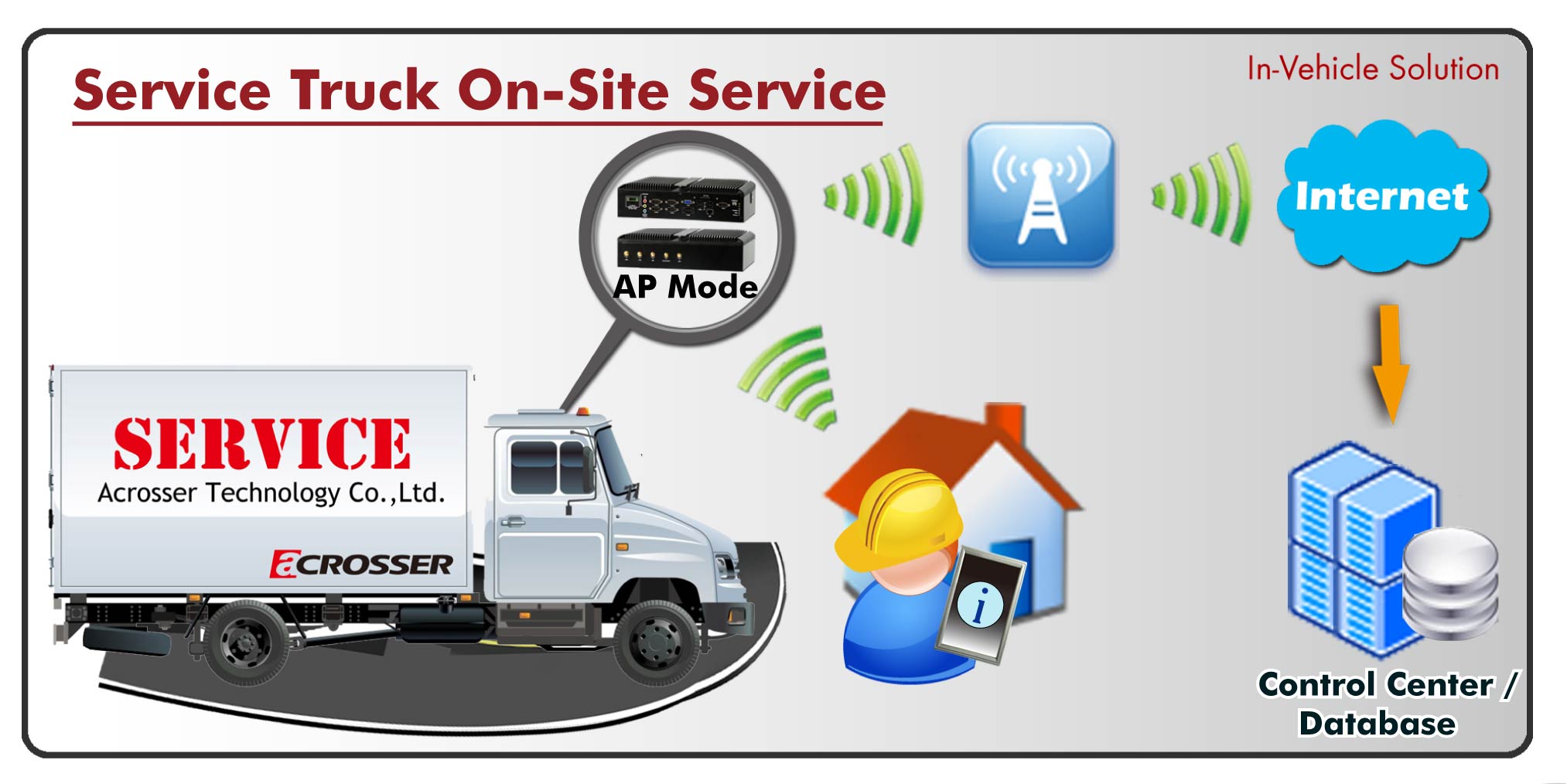
Telematics, an interdisciplinary field that encompasses telecommunications, vehicular technologies, road transportation, road safety, electrical engineering (sensors, instrumentation, wireless communications, etc.), and computer science (multimedia, Internet, etc.); is a very important part of IoT (Internet-of-Things). As a member of Intel IoT Solutions Alliance, acrosser will continue to invest more resources in researching and developing In-Vehicle PC products and solutions which play key roles in Telematics applications. Moreover, Acrosser will integrate hardware and third-party software together to provide all its customers with total solutions for their telematics projects.
Typically, Acrosser In-Vehicle PCs are utilized in fleet management, route planning, driver coaching, vehicle location tracking, passenger infotainment systems, onboard surveillance, telemedicine implementation, fuel economy, and in lowering overall costs. For 2018, Acrosser Technology will expand its In-Vehicle PC applications to include other markets such as the railway and train markets. To meet the special needs of these markets, Acrosser will integrate PoE (Power-over-Ethernet) solutions to its 2018 new In-Vehicle PC product line which facilitates faster deployment of mobile networking on vehicles by eliminating the need for power outlets at every end-point.
Currently, Acrosser In-Vehicle Computers feature Powered by Intel® Core i™, Intel Pentium™, and Intel® Atom™ CPUs. Every product is built with remarkable quality, designed to successfully survive rugged environments, and all models provide unique features and functions to cater to various industries. Moreover, all Acrosser In-Vehicle PCs are designed to meet and fulfill every need and requirements from customers in accomplishing the desired results of efficient Telematics.
For more details about Acrosser In-Vehicle PC products, please check the following:
1. In-Vehicle PCs
2. In-Vehicle Touch Monitors
3. In-Vehicle PC Accessories
Acrosser Technology not only provides In-Vehicle Computer products with high reliability and availability but also with the best scalability and manageability in the industry. Acrosser Technology is your best choice for building Telematics applications in today’s IoT environment.
For more product information and availability, please send your inquiry at: https://www.acrosser.com/en/Contact/Inquiry
Subscribe to our social media sites and stay connected!
Please visit us @ the following social media sites:
Acrosser Facebook
Acrosser Twitter
Acrosser Google+
Acrosser Youtube








